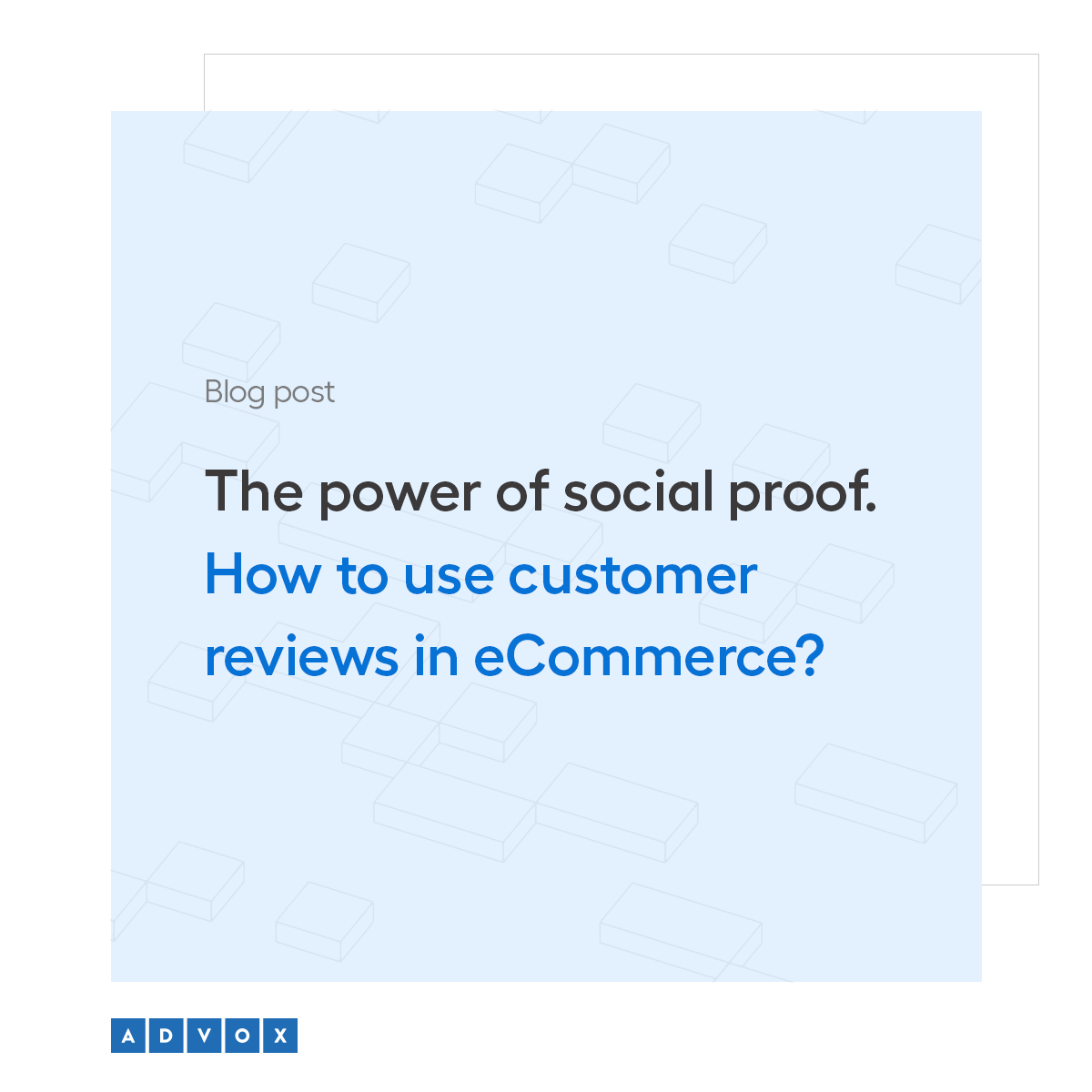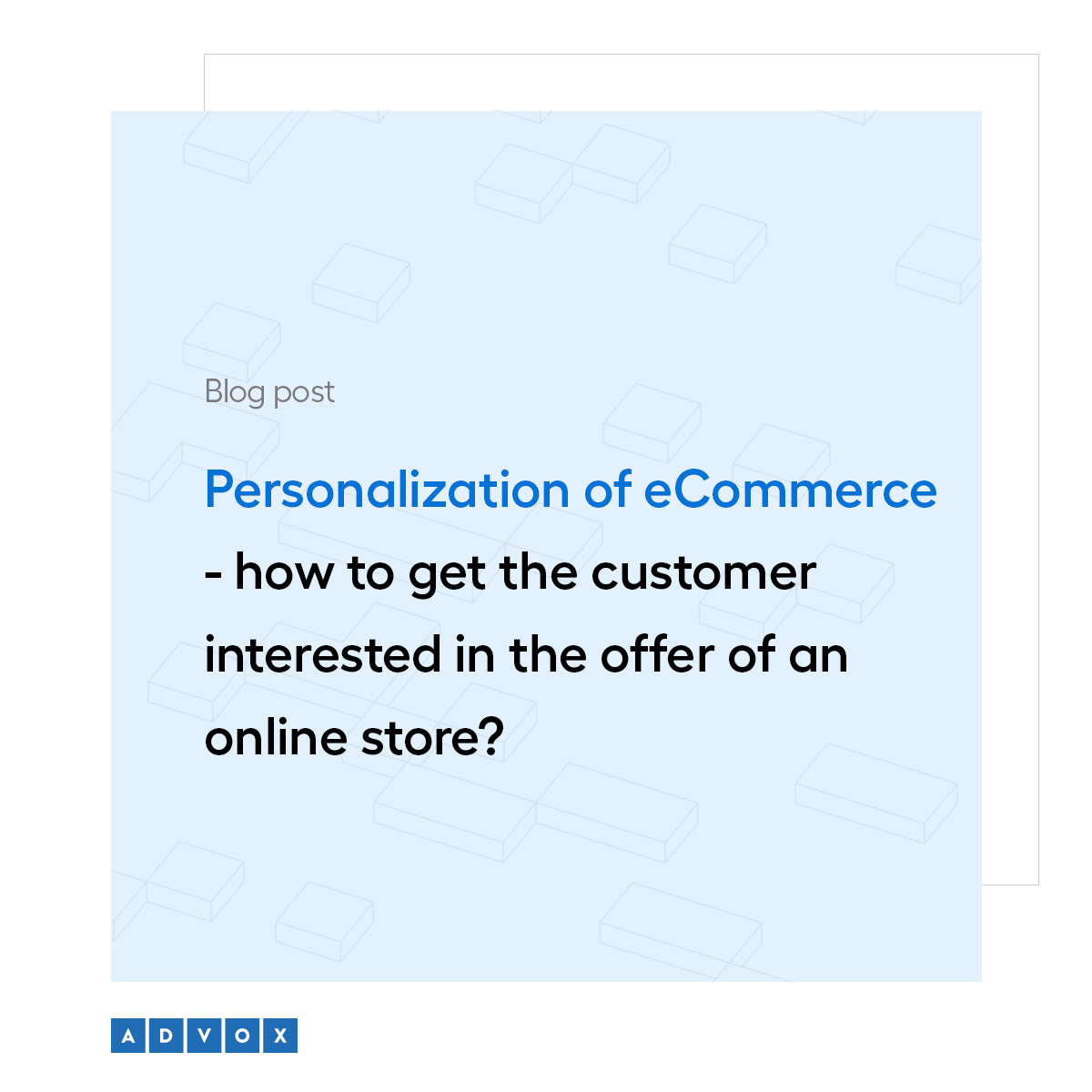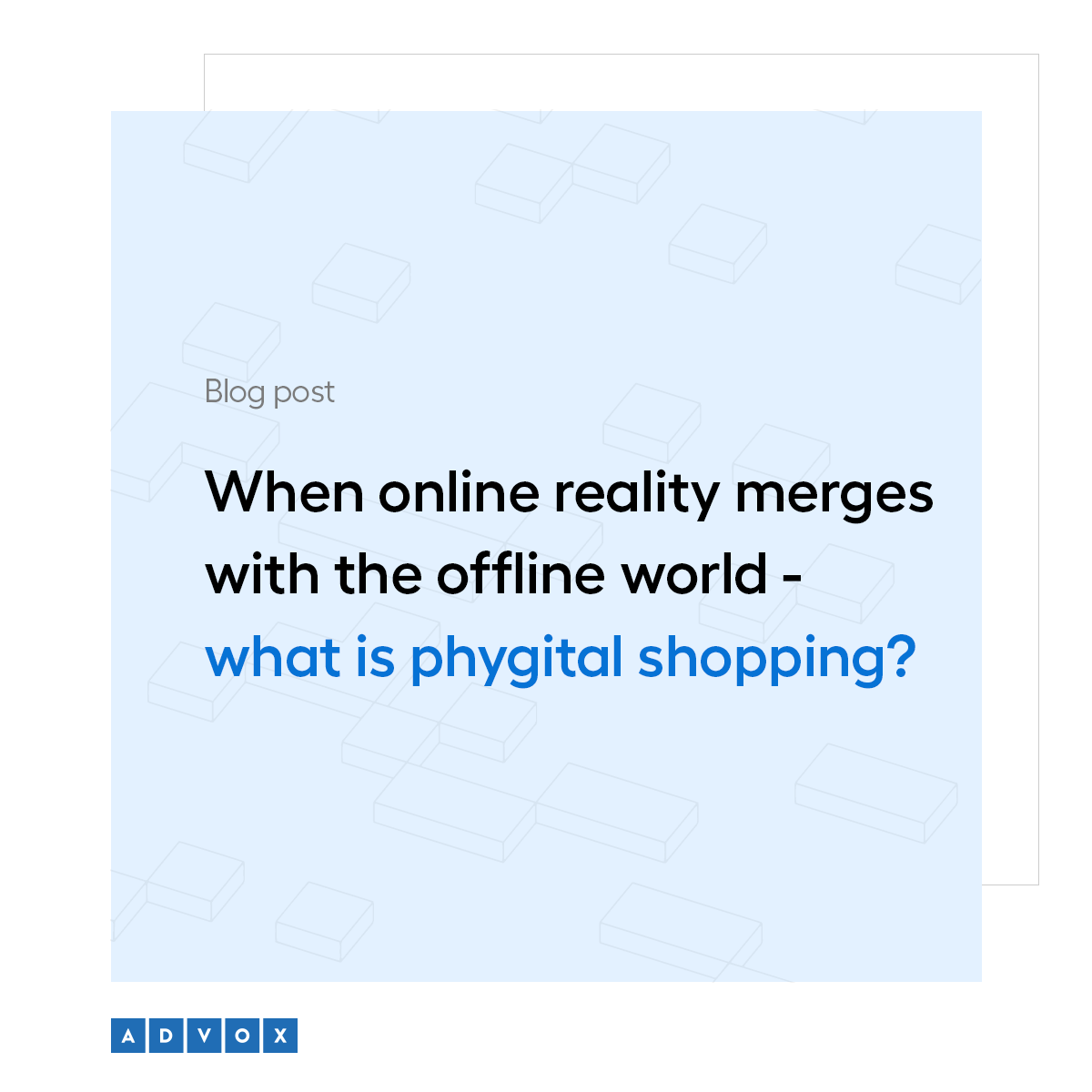Micro-moments - little sparks that can elevate your online sales performance
Tabel of contents
- Micro-moments - what's the deal?
- Discover 4 types of micro-moments
- Micro-Moments: their impact on eCommerce
- Making the most of micro-moments in your online store
- Micro-Moments in your eCommerce - seize the chance for improved sales
- I Want To Know Moments - moments in which a user feels a sudden desire to delve into a certain topic. Questions that arise may stem simply from curiosity (e.g., "how is a rainbow formed?") or from the need to solve a specific problem (e.g., "what is the tax-free allowance in 2024?").
- I Want To Do Moments - in this case, the user not only seeks knowledge but also specific advice or instructions on how to perform a task (e.g., "how to fix a broken washing machine?").
- I Want To Buy Moments - moments when a customer decides to buy a particular product and is ready to finalise the transaction.
- I Want To Go Moments - impulses related to seeking interesting places where the user is located, such as restaurants, tourist attractions, cultural venues, or service providers (e.g., hairdressers, mechanics, shopping centers).
- product comparators - the ability to intuitively compare products based on their features or individual parameters will help in making an informed choice.
- personalization - since micro-moments are highly subjective, it's essential to be able to recognize and satisfy each customer's sudden needs individually. To do this, you can use data related to user behaviour on the site, their purchase history, preferences, or even location to provide them with personalised content, product recommendations, or promotional offers.
- opinions and reviews - presenting credible and authentic opinions of other users is also crucial and should not be overlooked on your online store.
- optimization of page loading speed - ensure that the page loading time is as short as possible. You can achieve this by optimising the page code, compressing images and CSS files, and choosing fast hosting.
- simple and intuitive purchasing process - speed is not only essential during page loading but also during the ordering process, so it should be as simple and intuitive as possible for the user. You can use solutions such as one-step checkout, which allows the user to make a purchase using a simple form.
- fast payment and delivery methods - provide various fast payment methods, such as credit card payment, online payments, or payments using an electronic wallet. Additionally, ensure the option to choose fast delivery methods that will allow the user to receive the ordered product quickly.
- Be authentic - customer reviews, user-generated content (UGC), and subtle suggestions can be crucial for attracting users' attention in micro-moments. Users often trust other customers more than advertisements, so it's worth leveraging their positive experiences to build trust and encourage purchases.
- Use geolocation - leveraging geolocation data allows you to better target your audience and increase the effectiveness of marketing activities, especially if you base your strategy on "I Want To Go" micro-moments.
- Act across multiple channels - micro-moments can occur on various platforms and in different forms. Therefore, it's worth operating across multiple channels (e.g., website, social media, mobile apps) to reach users not only at the right time but also in the right place.
- Remember the mobile-first approach - it's precisely during the use of mobile devices that users most frequently encounter micro-moments (though not exclusively). For this reason, your store should be fully functional and intuitive even on smaller screens. You can achieve this by creating a dedicated mobile version of the platform, using Progressive Web App (PWA) technology, or ensuring the responsiveness of the website.
- Don't overlook data analysis - continuously monitoring changes in user behaviour and analysing data related to micro-moments is crucial for an effective eCommerce strategy. This allows for quick responses to customer needs and preferences and the adjustment of sales activities to changing market conditions.
- 91% of smartphone users consider their phone a tool for acquiring knowledge,
- 82% make purchasing decisions based on other users' opinions,
- 66% check product information when they see it on TV.
Research conducted for Think with Google shows that the average smartphone user experiences up to 150 micro-moments every day. It is these short but intense impulses that significantly influence how users engage with the internet and how consumers make purchasing decisions. But what exactly are micro-moments and how can you leverage them in your online store? You'll find out in this article. Don't waste a moment and discover an effective strategy that will help you increase the efficiency of your eCommerce!
Micro-moments - what's the deal?
The concept of micro-moments isn't new - Google introduced it back in 2015. Despite the passage of time, this statement remains relevant and even gains popularity. Why? Because the pace of internet browsing continues to accelerate (much like the pace of life in general) - users expect fast access to information and immediate results. Micro-moments perfectly cater to these needs, providing rapid fulfillment of expectations.
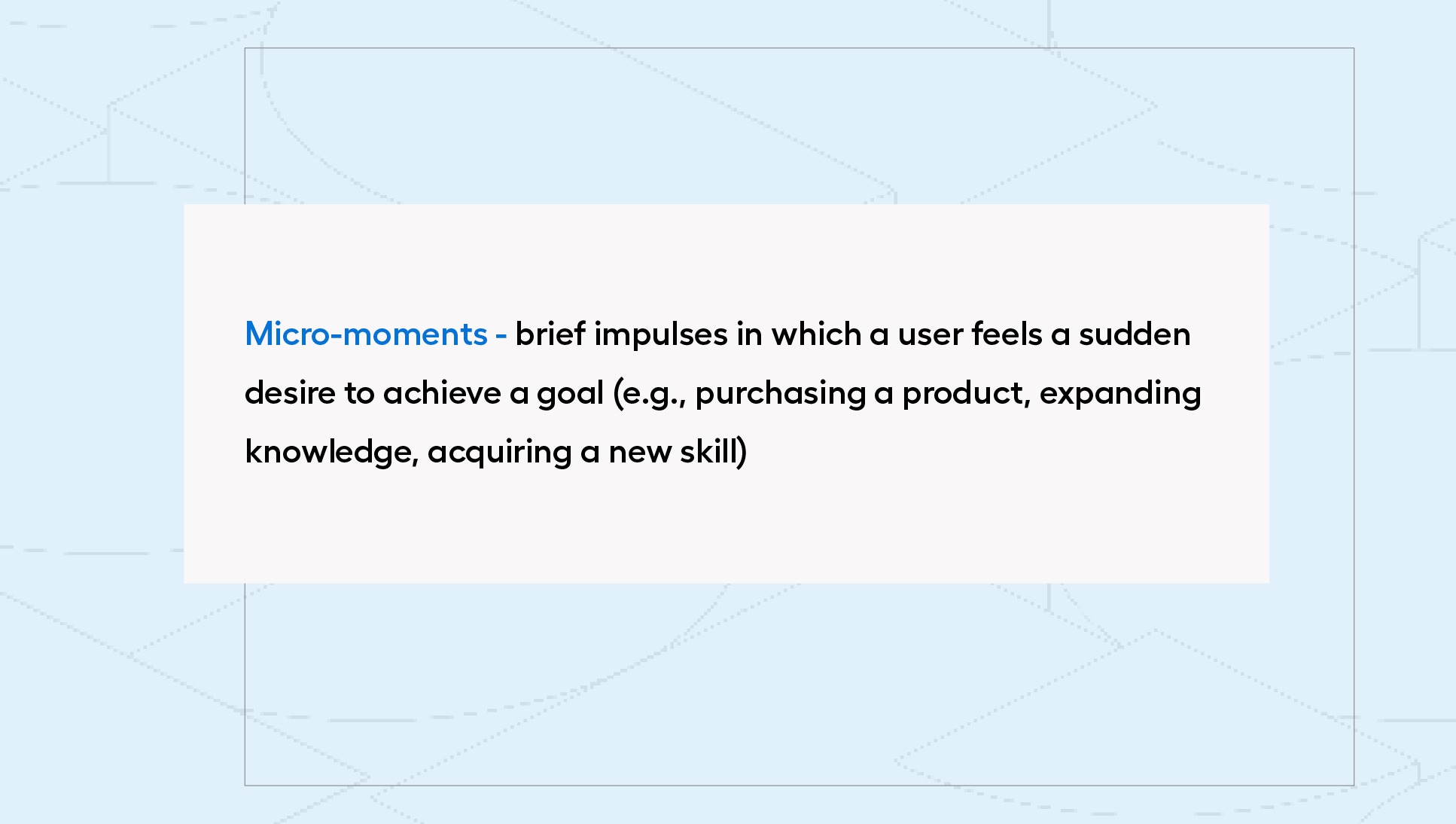
Micro-moments are brief impulse-like moments during which the user makes sudden decisions. They can be associated with a sudden desire to fulfil a material need (e.g., owning a specific item, visiting a certain place) or an immaterial one (e.g., getting an answer to a pressing question). Moreover, a key characteristic of micro-moments is the expectation of immediate gratification, i.e., achieving the goal. Failure to provide quick satisfaction leads to the loss of the micro-moment's value, rendering it merely an opportunity wasted. It is for this reason that proper awareness and utilisation of micro-moments in business can yield additional benefits such as increased profits, competitive advantage, and building customer loyalty.
Discover 4 types of micro-moments
Although micro-moments last only a fraction of a second, they take various forms depending on the context and situation in which the user experiences the impulse. Google identifies four primary types:
Each of these moments can be successfully utilized in business. The last two types of micro-moments ("I Want To Buy" and "I Want To Go") present opportunities for eCommerce. Through them, you can enable customers to purchase your product online or utilize your service. Meanwhile, in the remaining cases ("I Want To Know" and "I Want To Do"), micro-moments can be used to build relationships and trust with customers. Later in the article, you'll learn how to achieve this.
Micro-Moments: their impact on eCommerce
If you're wondering where micro-moments can be found in eCommerce, the answer is: everywhere. Micro-moments permeate practically the entire user's shopping journey. In each of these moments lies the potential for interaction with the user and providing them with valuable content or experiences that can persuade them to make a purchase - discover how to utilise them all by going through each stage of the shopping journey step by step.
Moment #1 "I want to solve my problem"
Micro-moments can be encountered right at the beginning of the user's journey - when the user feels a certain need but doesn't have a clear idea of how to satisfy it yet. This is when questions arise that you, as a store, can answer. To do this, focus on valuable content.
The content on your store's website should be characterized by usefulness. This means that published texts should provide users with specific knowledge. Blog articles and product descriptions should be written in a way that allows users to quickly find answers to their questions while also making them easy to find in search results. To achieve this, all content on your site should be created following SEO principles to achieve the highest possible results in search (e.g., appearing in the section with so-called quick answers).
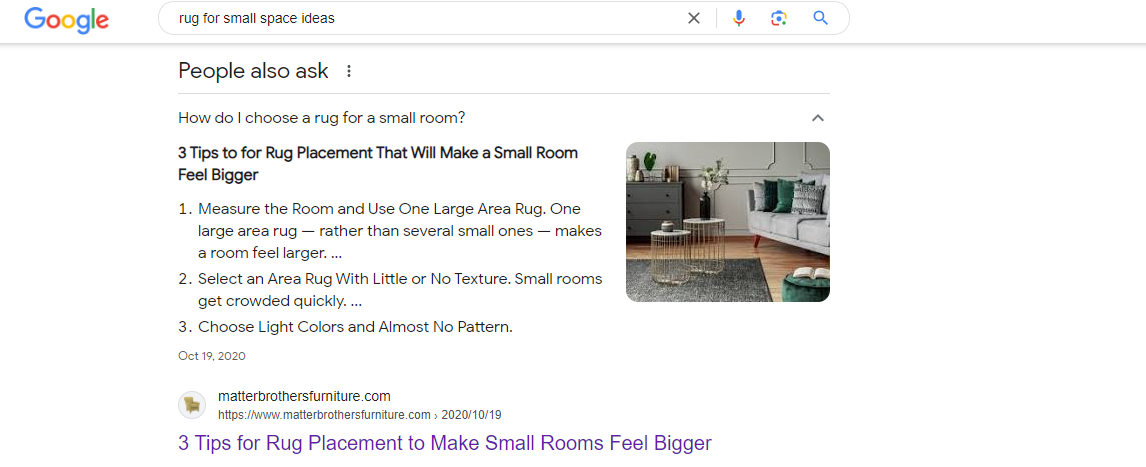 An example of the use of micromoments in Google search by the matterbrothersfurniture.com store
An example of the use of micromoments in Google search by the matterbrothersfurniture.com store
Moment #2 "I need help choosing"
The user already understands their need but requires assistance in making a choice. At this stage, they compare products available on the market, check which offer best suits their needs, and read reviews from other users. It's important to provide them with information during these moments that will help them make a purchasing decision. To do this, you can use tools such as:
Moment #3 "I want to buy"
In this micro-moment, the user is ready to make a purchase. This is a crucial moment when the store must provide optimal conditions for the transaction to be finalized quickly and smoothly. Time is also of the essence here, so it's worth ensuring the optimization of page loading speed. Therefore, to meet user expectations, consider implementing the following actions:
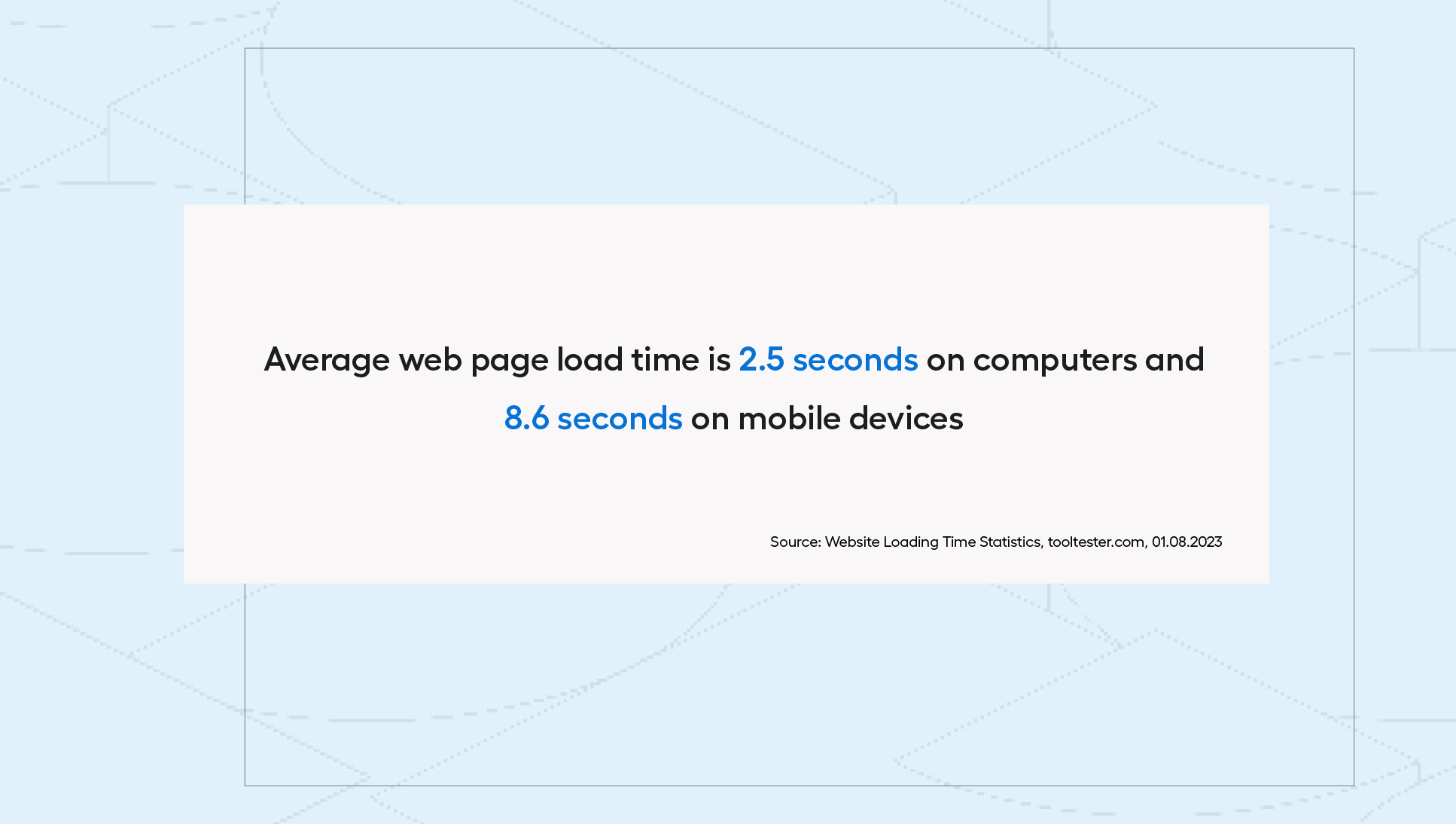
Moment #4 "I want to be part of the e-store community"
Micro-moments are more than just the moment of making a purchase. It's also an opportunity to engage customers in the e-store community, leveraging the excitement associated with a new product. Encourage them to share opinions, reviews, and photos on the store's website or social media. In return, you can offer discounts on future purchases, for example. Above all, remember that even small interactions, such as sharing a customer's photo on the official e-store profile, can significantly strengthen customer relationships. Such actions build a bond between the brand and the customer, increasing their loyalty and motivation for repeat purchases.
Making the most of micro-moments in your online store
To make the most of micro-moments, it's crucial to capture the user's attention at the right moment. It's essential not to disregard any of these brief moments and fully utilize the interest that arises. Even if a customer is only seeking an answer to a specific question, there's a chance they'll return in the future to make a purchase. Therefore, when incorporating micro-moments into your strategy, it's worth taking a comprehensive approach. To support you in fully utilising the potential of these short moments, we've prepared some tips that you can use:
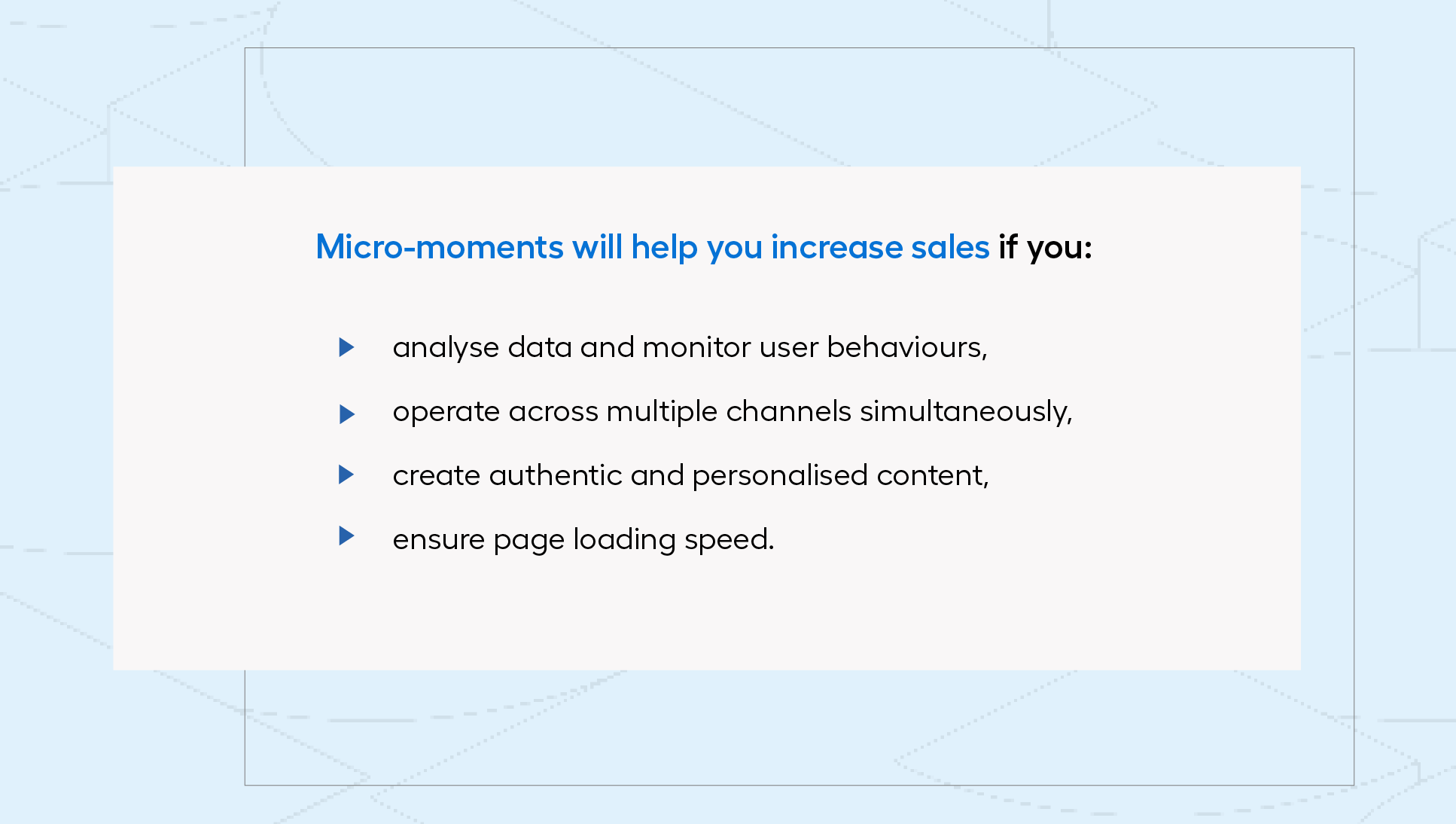
Micro-Moments in your eCommerce - seize the chance for improved sales
In today's eCommerce world, where speed and immediate results are crucial for effective communication with customers, statistics speak for themselves (Think with Google study):
Each of these users succumbs to micro-moments, which can be a turning point in the purchasing process. Therefore, each of these users can become your customer if you help them achieve their goals.
Adapt your sales strategy to the needs and expectations of users, monitor their behaviors, and quickly respond to the signals they send - this way, you will utilize micro-moments and build lasting relationships with customers.
